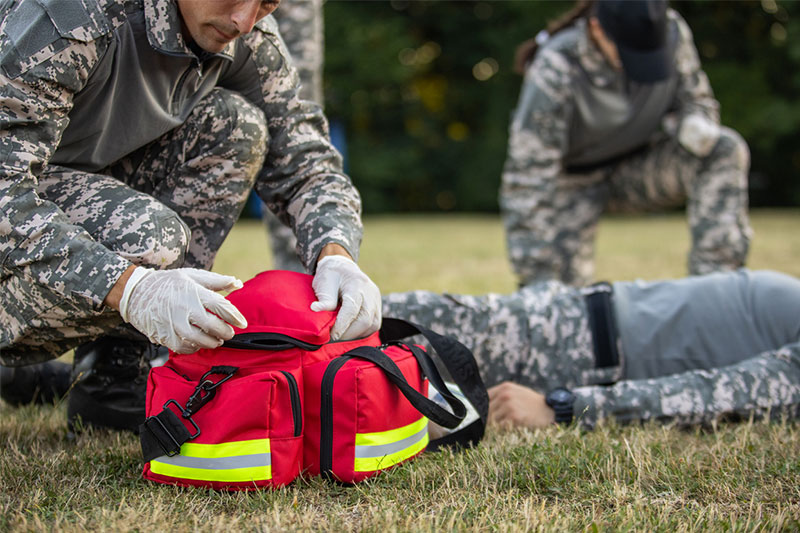
Table of Contents
When it comes to emergency situations, knowing how to use a tourniquet can be the difference between life and death. Tourniquets are essential medical devices designed to control severe bleeding, particularly in situations where direct pressure is not enough. Whether you’re a medical professional, a first responder, or simply someone who wants to be prepared, understanding the correct use of a tourniquet is crucial.
In this guide, we’ll walk you through the steps of using a tourniquet effectively, while also highlighting the importance of choosing a high-quality tourniquet for optimal safety and performance.
What is a Tourniquet?
A tourniquet is a device used to apply pressure to a limb or extremity in order to restrict blood flow. It is typically used in emergencies to stop severe bleeding, especially in cases of traumatic injuries. Modern tourniquets are designed to be easy to use, durable, and effective, making them a must-have in any first aid kit or emergency response toolkit.

When Should You Use a Tourniquet?
A tourniquet should only be used in life-threatening situations where bleeding cannot be controlled by other means, such as direct pressure or wound packing. Common scenarios include:
- Severe limb injuries from accidents
- Gunshot or stab wounds
- Industrial or workplace injuries
- Amputations or crush injuries
Remember, a tourniquet is a last resort and should only be applied when absolutely necessary.
How to Use a Tourniquet: Step-by-Step Instructions
- Identify the Need for a Tourniquet
Assess the injury and determine if the bleeding is severe enough to require a tourniquet. Look for signs such as pooling blood, spurting blood, or an injury that cannot be controlled with direct pressure. - Choose the Right Tourniquet
Ensure you are using a high-quality, medical-grade tourniquet. Cheap or improvised tourniquets may not provide adequate pressure and can cause further harm. - Position the Tourniquet
Place the tourniquet 2-3 inches above the injury, avoiding joints like the knee or elbow. If the injury is on a joint, place the tourniquet above it. - Apply the Tourniquet
Wrap the tourniquet tightly around the limb and secure it according to the manufacturer’s instructions. Most modern tourniquets use a windlass system to tighten and lock the device in place. - Tighten Until Bleeding Stops
Turn the windlass or tightening mechanism until the bleeding stops. This may be painful for the injured person, but it is necessary to save their life. - Secure the Tourniquet
Once the bleeding has stopped, secure the windlass or tightening mechanism to prevent it from loosening. Note the time the tourniquet was applied, as this information is critical for medical professionals. - Seek Immediate Medical Help
A tourniquet is a temporary solution. The injured person must receive professional medical care as soon as possible to prevent complications.
Why Choose a High-Quality Tourniquet?
Not all tourniquets are created equal. A poorly designed or low-quality tourniquet can fail when you need it most, putting lives at risk. When selecting a tourniquet, look for the following features:
- Durability: Made from strong, reliable materials that can withstand extreme conditions.
- Ease of Use: Designed for quick and simple application, even in high-stress situations.
- Effectiveness: Proven to stop bleeding efficiently without causing unnecessary damage to the limb.
At Runde Medical, we specialize in manufacturing top-of-the-line tourniquets that meet the highest standards of safety and performance. Our products are trusted by medical professionals, military personnel, and first responders worldwide.
Tourniquet Safety Tips
- Practice Proper Technique: Familiarize yourself with the tourniquet before an emergency arises. Practice applying it to ensure you can do so quickly and correctly.
- Avoid Over-Tightening: While a tourniquet needs to be tight enough to stop bleeding, excessive pressure can cause nerve damage or tissue injury.
- Do Not Remove Once Applied: Once a tourniquet is in place, only a medical professional should remove it.

Why choose us
We provide tourniquet is FDA, CE approved. After experimental testing, it can withstand a tearing force of 10,000 Daltons without breaking.
At Runde Medical, we are committed to providing reliable, effective tourniquets that you can trust in critical moments. Explore our range of products today and ensure you’re equipped with the best tools for emergency preparedness.
Share on
